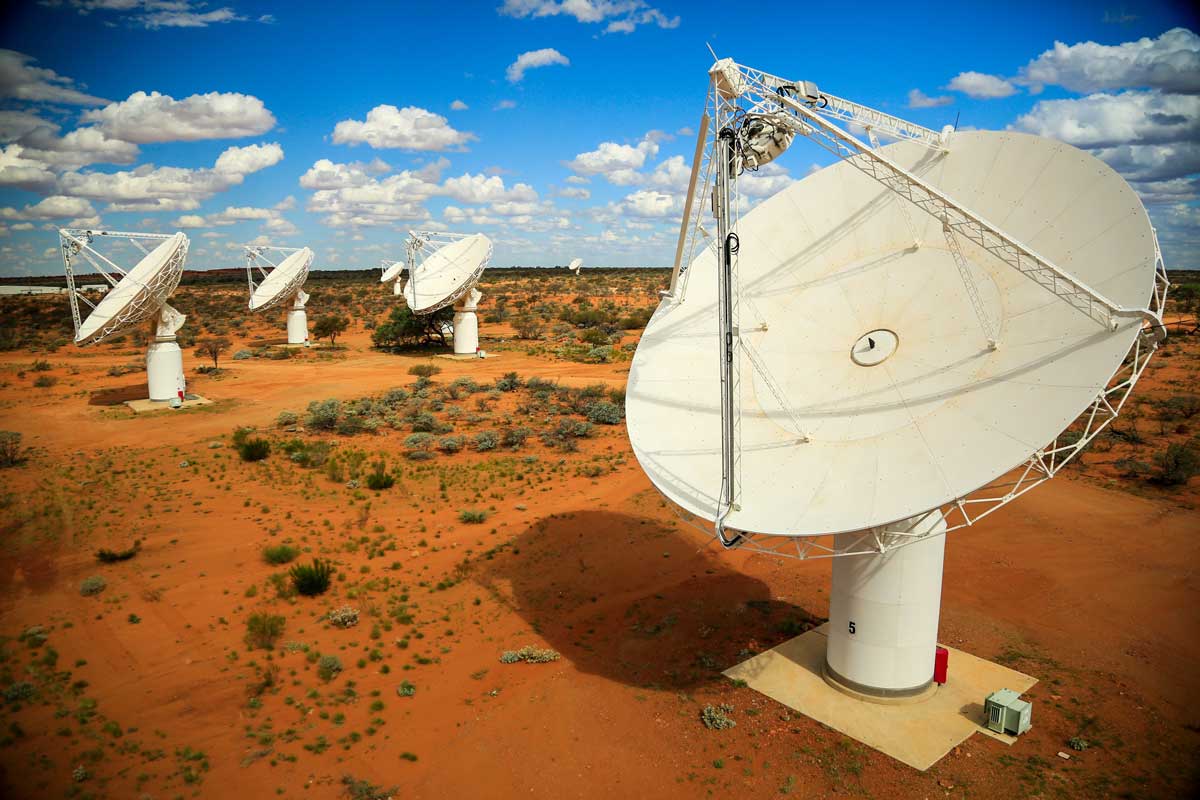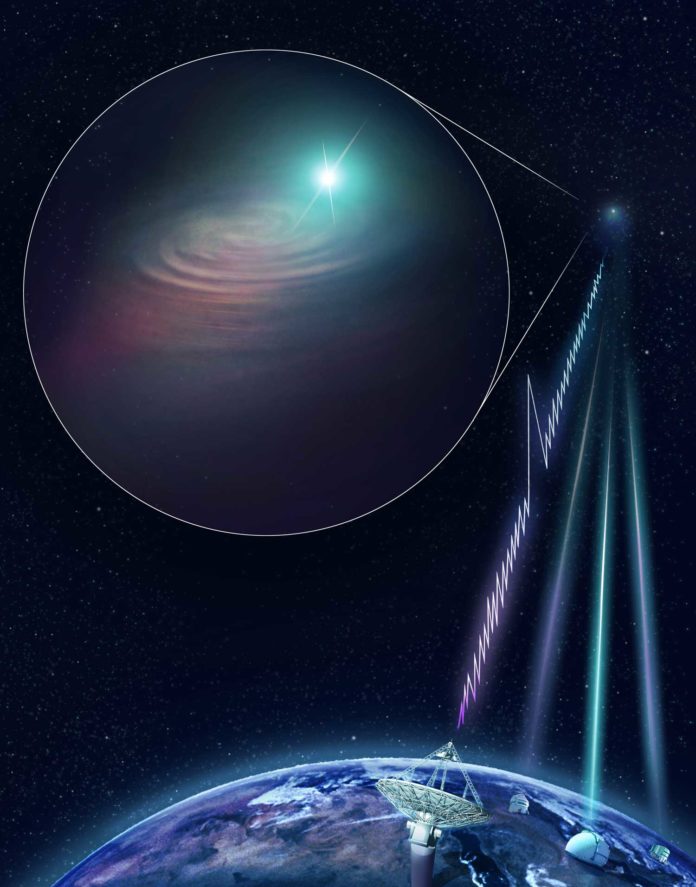For the first ever time, astronomers have detected the exact location of a powerful one-off burst of cosmic radio waves using CSIRO’s new Australian Square Kilometre Array Pathfinder (ASKAP) radio telescope in Western Australia. This is the huge leap forward that the field has been waiting for since astronomers found fast radio bursts in 2007.
Scientists then used three of the world’s largest optical telescopes – Keck, Gemini South, and the European Southern Observatory’s Very Large Telescope to image the galaxy, from which this radio burst generated.
Fast Radio Bursts (FRBs) are brief radio emissions from distant astronomical sources. Some are known to repeat, but most of them are single bursts. Non-repeating FRB observations have had insufficient positional precision to localize them to an individual host galaxy.
Scientists developed new technology to image and saved ASKAP data within a second after a burst arrives at the telescope.

Using the technology, astronomers pinpointed the location of FRB 180924 to its home galaxy (DES J214425.25−405400.81). They then created a high-resolution map and demonstrated that the burst originated in the outskirts of a Milky Way-sized galaxy about 3.6 billion light-years away.
CSIRO lead author Dr. Keith Bannister said, “If we were to stand on the Moon and look down at the Earth with this precision, we would be able to tell not only which city the burst came from, but which postcode – and even which city block.”
Dr. Adam Deller of Swinburne University of Technology said, “From these tiny time differences – just a fraction of a billionth of a second – we identified the burst’s home galaxy and even its exact starting point, 13,000 light-years out from the galaxy’s center in the galactic suburbs.”
To obtain detail information about the galaxy, astronomers used European Southern Observatory’s 8-m Very Large Telescope in Chile to image it. They also measured its distance with the 10-m Keck telescope in Hawai’i and the 8-m Gemini South telescope in Chile.
The only previously localized burst, the ‘repeater’ is originating from a tiny galaxy that is forming lots of stars.
Dr. Deller said, “The burst we localized and its host galaxy looks nothing like the ‘repeater’ and its host. It comes from a massive galaxy that is forming relatively few stars. This suggests that fast radio bursts can be produced in a variety of environments, or that a different mechanism to the repeater generates the seemingly one-off bursts detected so far by ASKAP.”
However, the exact reason for fast radio bursts remains unknown, but the ability to determine their precise location is a big leap towards solving this mystery.
Dr. Jean-Pierre Macquart (Curtin University node of the International Centre for Radio Astronomy Research (ICRAR)) is an expert on using fast radio bursts to probe the Universe said, “These bursts are altered by the matter they encounter in space. Now we can pinpoint where they come from; we can use them to measure the amount of matter in intergalactic space. This would reveal material that astronomers have struggled for decades to locate.”
The localization of the radio burst was done as part of a project using ASKAP called CRAFT (Commensal Real-time ASKAP Fast Transients) that is jointly led by Dr. Bannister, Dr. Macquart and Dr. Ryan Shannon of Swinburne University of Technology.
Dr. Shannon and CSIRO’s Dr. Shivani Bhandari carried out the observations and were the first to spot the burst.
Stuart Ryder (Macquarie University, Australia), J. Xavier Prochaska (University of California Santa Cruz, USA) and Nicolas Tejos (Pontificia Universidad Catolica de Valparaiso, Chile) carried out the optical observations.
ASKAP is located at CSIRO’s Murchison Radio-astronomy Observatory and is a precursor to the future Square Kilometre Array telescope.
CSIRO acknowledges the Wajarri Yamaji as the traditional owners of the MRO site.
The detail information is published in the journal Science today.
